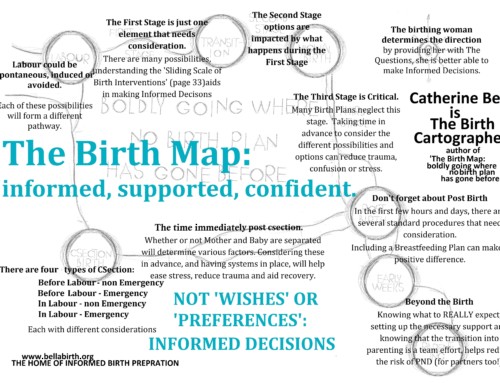By Tracy G. Cassels
With modern technology comes modern interventions and techniques that warrant further discussion. Especially when it comes to birth. Through discussion and research we have come to see the inherent risks and benefits of practices like caesarean sections or the use of drug interventions. Another area that is starting to receive a lot of discussion is cord blood banking. Yet when asked if they want to do it, many expecting couples simply don’t know enough to make an educated decision and thus the decision falls, rightly or wrongly, to either ignorance on the matter or emotionality, neither of which tend to lead to the best decisions for a family. Here I hope to present information on cord blood banking to allow you to make the decision you believe best reflects the needs of your family.
Cord blood refers to the blood that is in your baby’s umbilical cord and the placenta at birth. It contains blood stem cells which can be developed into various forms of blood cells which are currently used to treat myriad blood and genetic diseases. Cord blood can only be collected at birth and specific collection protocols must be followed, meaning parents must make the decision ahead of time. This typically involves registering and obtaining a collection kit and informing your midwife or doctor of your plans so they can be prepared.
What diseases can it help?
Currently, the diseases that can be treated by cord blood include types of cancer, genetic diseases, immune deficiencies, and blood disorders. Over 75 diseases in the following categories can be treated with technologies and treatments stemming from cord blood:
Acute Leukemia
Chronic Leukemia
Histiocytic Disorders
Inherited Metabolic Disorders
Inherited Erythrocyte Abnormalities
Inherited Immune System Disorders
Inherited Platelet Abnormalities
Lymphoproliferative Disorders
Meylodysplastic Syndromes
Phagocyte Disorders
Plasma Cell Disorders
Other Malignancies
Other Inherited Disorders
The success of cord blood treatments for these diseases is quite good (especially when it is the individual’s own cord blood or the cord blood of a sibling) and the amount of research being put forth into ways of treatment for all individuals is huge There are a couple drawbacks to cord banking that people are typically unaware of when they first start to think about cord blood banking and that may lead a family to decide not to bank cord blood. The first is the cost. While some countries do have public cord banks, not all do (e.g., Canada), and thus the cost to banking cord blood can be heavy. And in cases where there is a public bank, families do not typically have access to their child’s cord blood later as public banks are set up to do research using cord blood and to create treatments for anyone who needs them and who might be a match. The donation is for the public good and is free, but is not used to help the child at a later time, if necessary. In Canada, private banks, such as Insception (which is the largest in Canada), charge $1000 for the initial collection of cord (and placental) blood and then will charge $125 per year for storage for a lifetime (20 year) cost of approximately $3500. In the United States, there are many cord blood banks and the initial cost is typically between $1500-2000 and approximately $100-125 per year for storage. In the United Kingdom, the full cost is taken up at the start by all banks and 25-30 years of storage is included. The median cost for this is £1695. In Australia, the initial cost is approximately $1500 and the total 20 year cost is about $5000. And in New Zealand, the cost is $795 for the collection and then $175 per year for storage from CordBank (the only private bank). The second drawback is that to collect cord blood, one cannot delay cord clamping. Although delayed cord clamping is not common in many hospitals, there is research to support its use. Most generally, delayed cord clamping allows for the blood that would be collected to enter the baby’s body and provide both immediate help to the organs and iron stores for the baby’s first year of life. In a large review of the research on delayed cord clamping, it was found that infants who experienced delayed cord clamping had higher red blood cell flow to vital organs in the first week of life and lower levels of anemia at 2 months[5]. In pre-term infants, delayed cord clamping can have even greater effects, with greater hematocrit and hemoglobin levels, higher blood pressure and blood volume, less need for blood transfusions, and less instance of intraventricular hemorrhage, with no negative effects of the delay[5][6]. Importantly, even when mothers are anemic, infant iron stores can be improved by delayed cord clamping[7]. For many families, the risk of anemia and the associated problems may be seen as greater than the potential risk of a child developing one of the diseases that can be helped with cord blood. If one considers that only 0.0002% of cord blood units stored in banks are actually used for transplants for the individual who donated them (or a family member)[8], the risks can seem small compared to the much higher rates of anemia and iron deficiency in infancy (though one could argue that anemia and iron deficiency can be relatively handled with supplementation, but that is something you need to decide). What to do? Cord blood banking is a personal decision. But there are likely a few factors that should influence your decision. The first is relative risk. If you have a family history of any genetic disease that can be treated with cord blood, you may consider it a great insurance policy to have in place to protect your child. While the absolute risk of these diseases is low (though more common for some of the diseases for which research is currently taking place and thus you may also want to consider the risk of diseases where treatment is on the horizon), if your child is at a heightened risk, cord blood could be a savior. A second factor is peace of mind. Will banking your child’s cord blood provide you with peace of mind? We know that it is not a cure-all, but it does confer some potential “protection” (so to speak) and if that can alleviate parental worry, it is not a bad thing. There is a lot to worry about when you become a parent – in fact, I’d say your worry will grow exponentially – and if banking your child’s cord blood alleviates some of that worry and you can afford it, then go ahead. Even if the risk of these diseases is small, it is there. But parents should also consider the effects of early cord clamping. Although it has become common practice, there are benefits to delayed cord clamping, particularly for pre-term babies, and these should not be ignored. Parents need to weigh the immediate risks of early clamping (particularly if a baby is pre-term) with the potential long-term benefits of having their child’s cord blood banked. Families will weigh this differently and come to different decisions, decisions that best reflect what works for their families. Hopefully with the information presented herein, you can feel a bit more confident in whatever decision you make. Additional Information/Resources If you are in Canada, Insception is the largest private cord blood bank and the one to have had the most treatments. There are no public cord blood banks in Canada. If you are in the United States, there are many private cord blood banks, the largest being the Cord Blood Registry. There are also public cord blood banks which you can find out more about at the Public Cord Blood Donation Program site. If you are in the UK, the largest cord blood bank is Biovault (which is actually a full tissue bank) and they are partnered with the NHS. The NHS also has a public cord blood bank which you can find out more about here. If you are in Australia, Cryosite is the largest private bank for cord blood. Cell Care is a newer bank, but has had successful treatments already. There is also a public cord blood bank in Australia run by the government which offers collection at specific hospitals only. If you are in New Zealand, there is only one private cord blood bank, Cordbank. Like Canada, there is currently no public cord blood bank in New Zealand. For other countries, please visit the Parent’s Guide to Cord Blood Foundation, a non-profit foundation designed to provide information for families worldwide on cord blood banking. [1] Rao M, Ahrlund-Richter L, Kaufman DS. Concise review: cord blood banking, transplantation and induced pluripotent stem cell: success and opportunities. Stem Cells 2012; 30: 55-60. [2] Burlingham WJ, Nelson JL. Microchimerism in cord blood: mother as anticancer drug. PNAS 2012; 109: 2190-2191. [3] Prasad VK, Kurtzberg J. Cord blood and bone marrow transplantation in inherited metabolic diseases: scientific basis, current status and future directions. British Journal of Haematology 2009; 148: 356-372. [4] Harris DT. Non-haematological uses of cord blood stem cells. British Journal of Haematology 2009; 147: 177-184. [5] Mercer JS. Current best evidence: a review of the literature on umbilical cord clamping. Journal of Midwifery and Women’s Health 2001; 46: 402-414. [6] Rabe H, Reynolds G, Diaz-Rossello J. A systematic review and meta-analysis of a brief delay in clamping the umbilical cord of preterm infants. Neonatology 2008; 93: 138-144. [7] Gupta R, Ramji S. Effect of delayed cord clamping on iron stores in infants born to anemic mothers: a randomized controlled trial. Indian Pediatrics 2002; 39: 130-135. [8] Smith FO. Why do parents engage in private cord blood banking: fear, realistic hope or a sense of control? Pediatric Blood and Cancer 2011; 56: 1003-1004.






Hey! Do you use Twitter? I’d like to follow you if that would
be ok. I’m absolutely enjoying your blog and look forward to new
updates.
You can follow using the twitter icon at the top 🙂
When i had my daughter in 2010 there was a public bank in edmonton, AB.
[…] for anything—what it does is that it gives your child a fighting chance if he/she were to get one of the diseases cord blood could be used for (and that’s after you get the full prescribed treatment) –in fact, […]
[…] Is plasma white blood cells Like Canada, there is currently no public cord blood bank in New Zealand. For other countries, please visit the Parent’s Guide to Cord Blood Foundation, a non-profit foundation designed to provide information for families worldwide on cord blood banking. [6] Rabe H, Reynolds G, Diaz-Rossello J. Plasma proteins in blood A systematic review and meta-analysis of a brief delay in clamping the umbilical cord of preterm infants. The main protein in blood plasma is Neonatology 2008; 93: 138-144. Site: https://gku.flm.mybluehost.me/evolutionaryparenting.com/cord-blood-to-bank-or-not/ […]
[…] Quelle: Nabelschnurblut: die Bank oder Nicht? | Evolutionare Erziehung | Wo Geschichte Und Wissenschaft Tref… […]